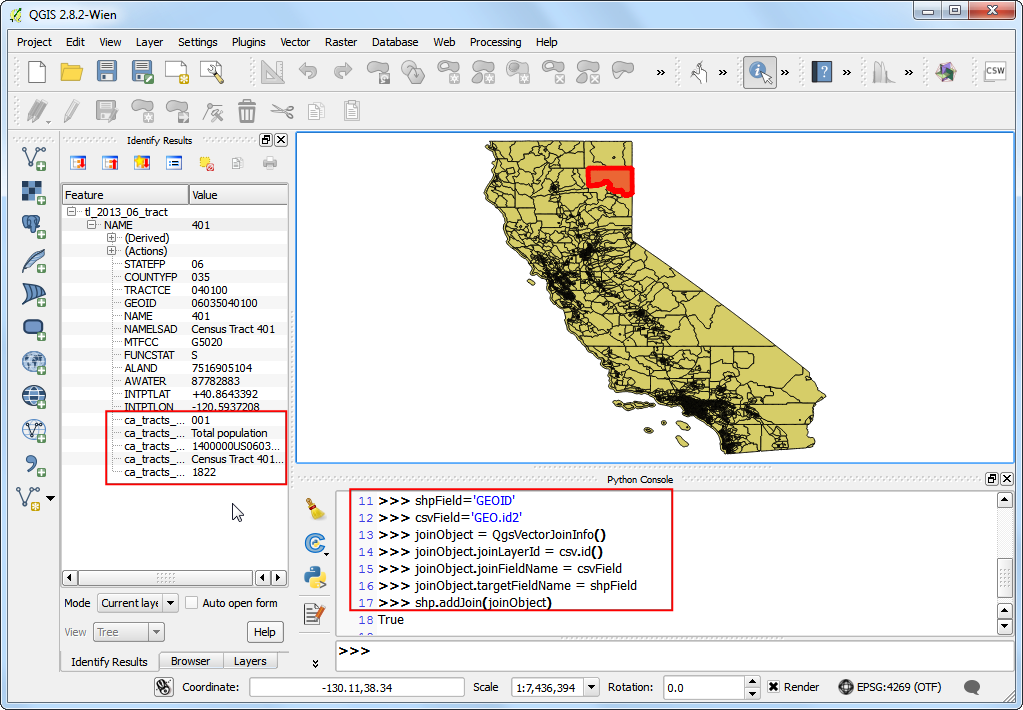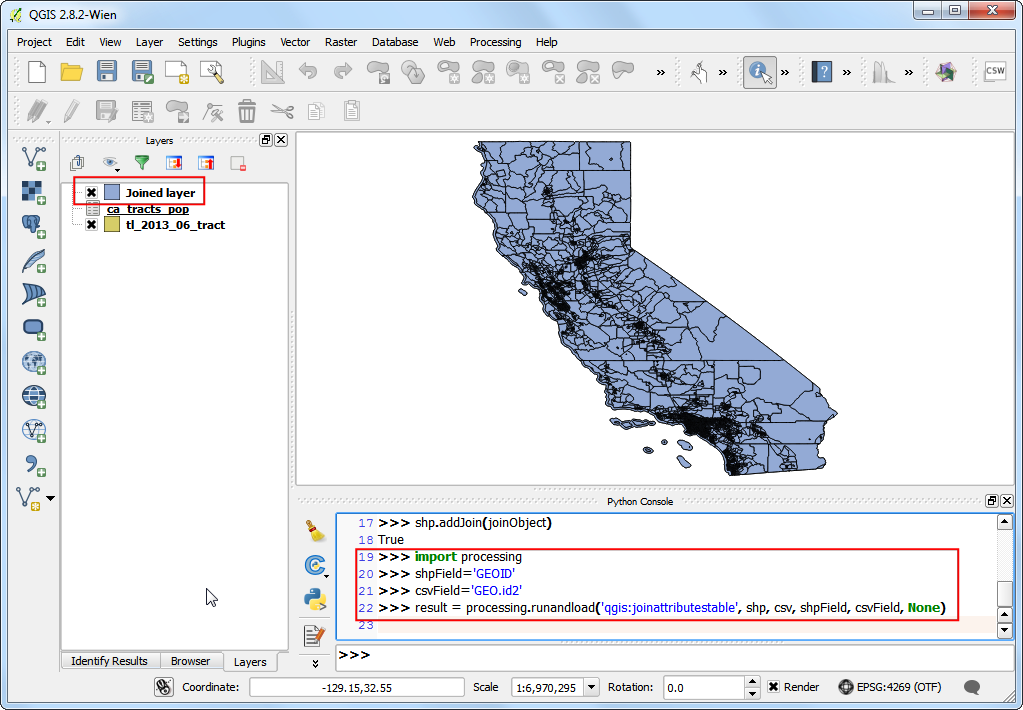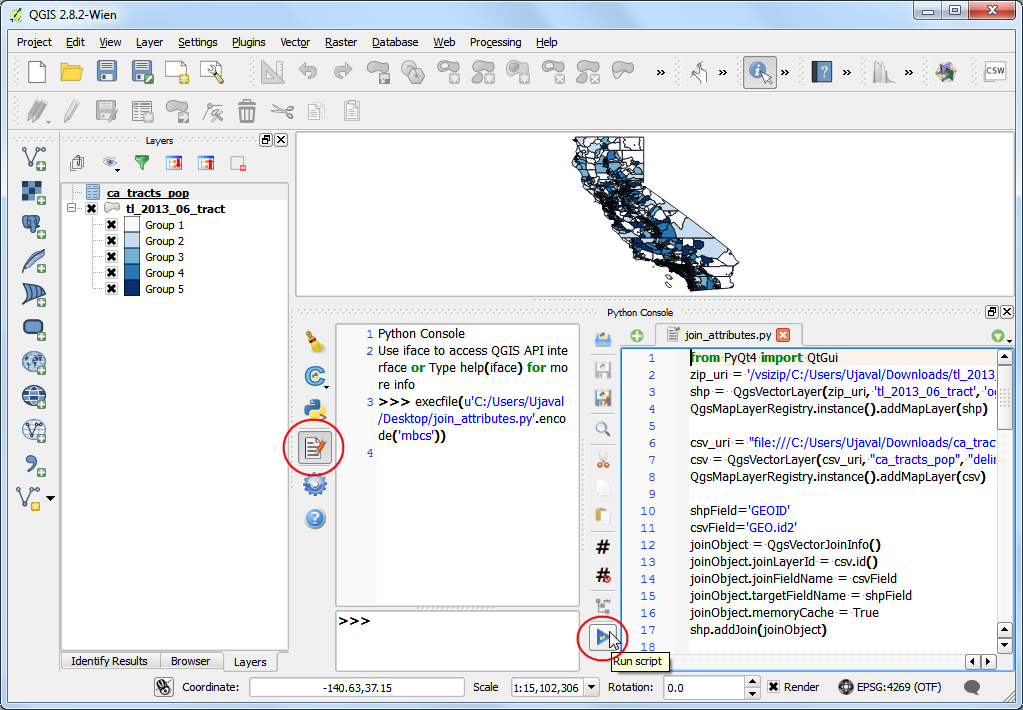from PyQt4 import QtGui
zip_uri = '/vsizip/C:/Users/Ujaval/Downloads/tl_2013_06_tract.zip/tl_2013_06_tract.shp'
shp = QgsVectorLayer(zip_uri, 'tl_2013_06_tract', 'ogr')
QgsMapLayerRegistry.instance().addMapLayer(shp)
csv_uri = "file:///C:/Users/Ujaval/Downloads/ca_tracts_pop.csv?delimiter=,"
csv = QgsVectorLayer(csv_uri, "ca_tracts_pop", "delimitedtext")
QgsMapLayerRegistry.instance().addMapLayer(csv)
shpField='GEOID'
csvField='GEO.id2'
joinObject = QgsVectorJoinInfo()
joinObject.joinLayerId = csv.id()
joinObject.joinFieldName = csvField
joinObject.targetFieldName = shpField
joinObject.memoryCache = True
shp.addJoin(joinObject)
myColumn = 'ca_tracts_pop_D001 '
myRangeList = []
myOpacity = 1
ranges = []
myMin1 = 0.0
myMax1 = 3157.2
myLabel1 = 'Group 1'
myColor1 = QtGui.QColor('#f7fbff')
ranges.append((myMin1, myMax1, myLabel1, myColor1))
myMin2 = 3157.2
myMax2 = 4019.0
myLabel2 = 'Group 2'
myColor2 = QtGui.QColor('#c7dcef')
ranges.append((myMin2, myMax2, myLabel2, myColor2))
myMin3 = 4019.0
myMax3 = 4865.8
myLabel3 = 'Group 3'
myColor3 = QtGui.QColor('#72b2d7')
ranges.append((myMin3, myMax3, myLabel3, myColor3))
myMin4 = 4865.8
myMax4 = 5996.4
myLabel4 = 'Group 4'
myColor4 = QtGui.QColor('#2878b8')
ranges.append((myMin4, myMax4, myLabel4, myColor4))
myMin5 = 5996.4
myMax5 = 37452.0
myLabel5 = 'Group 5'
myColor5 = QtGui.QColor('#08306b')
ranges.append((myMin5, myMax5, myLabel5, myColor5))
for myMin, myMax, myLabel, myColor in ranges:
mySymbol = QgsSymbolV2.defaultSymbol(shp.geometryType())
mySymbol.setColor(myColor)
mySymbol.setAlpha(myOpacity)
myRange = QgsRendererRangeV2(myMin, myMax, mySymbol, myLabel)
myRangeList.append(myRange)
myRenderer = QgsGraduatedSymbolRendererV2('', myRangeList)
myRenderer.setMode(QgsGraduatedSymbolRendererV2.Quantile)
myRenderer.setClassAttribute(myColumn)
shp.setRendererV2(myRenderer)






